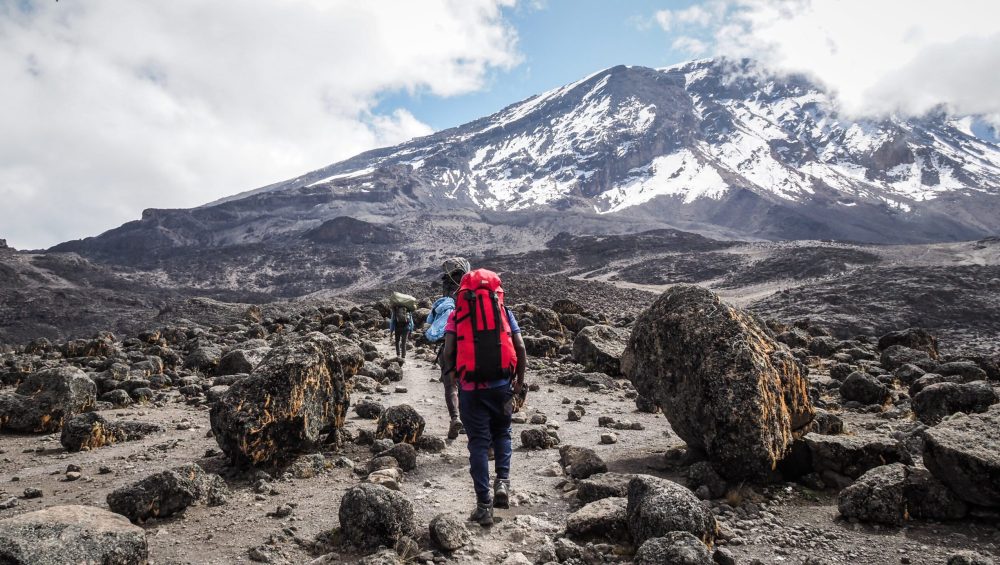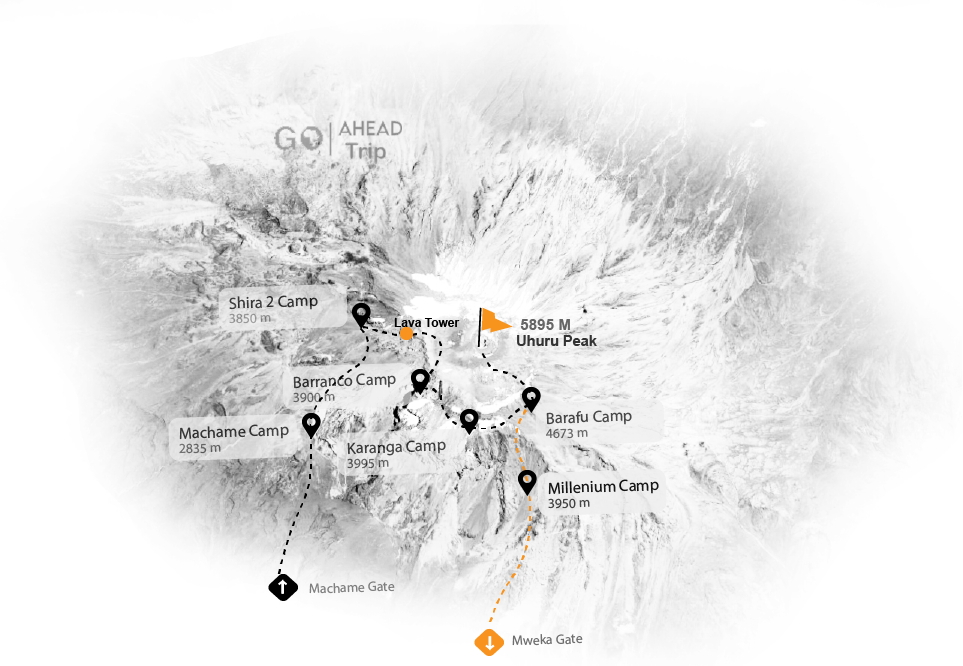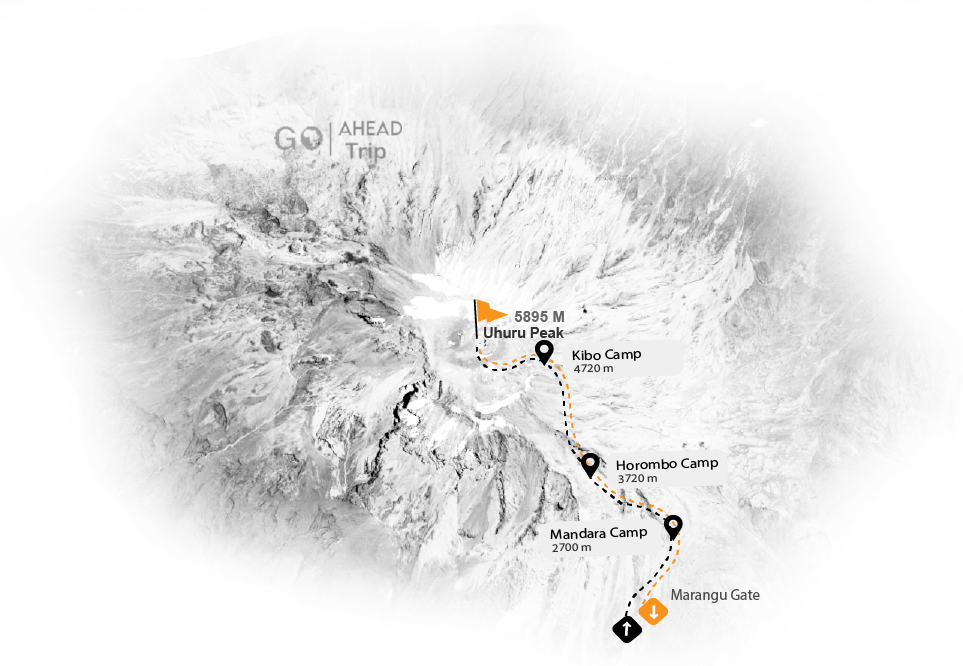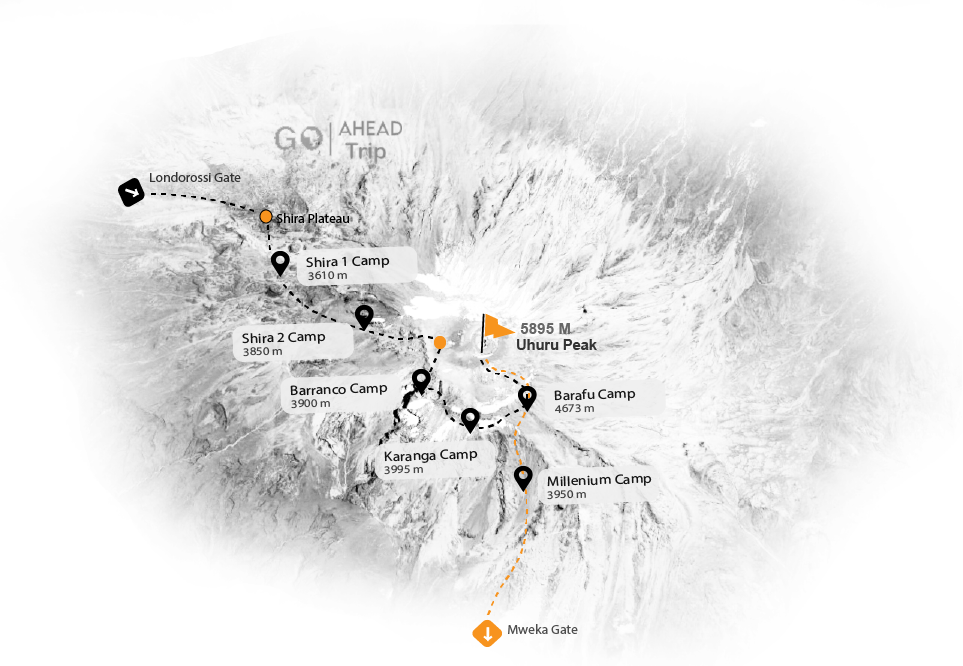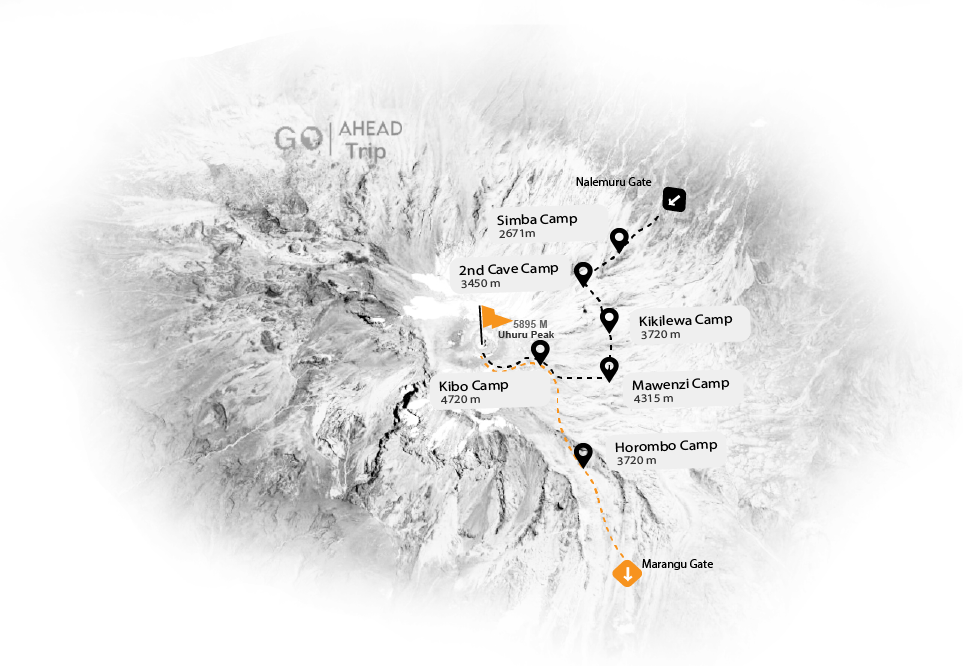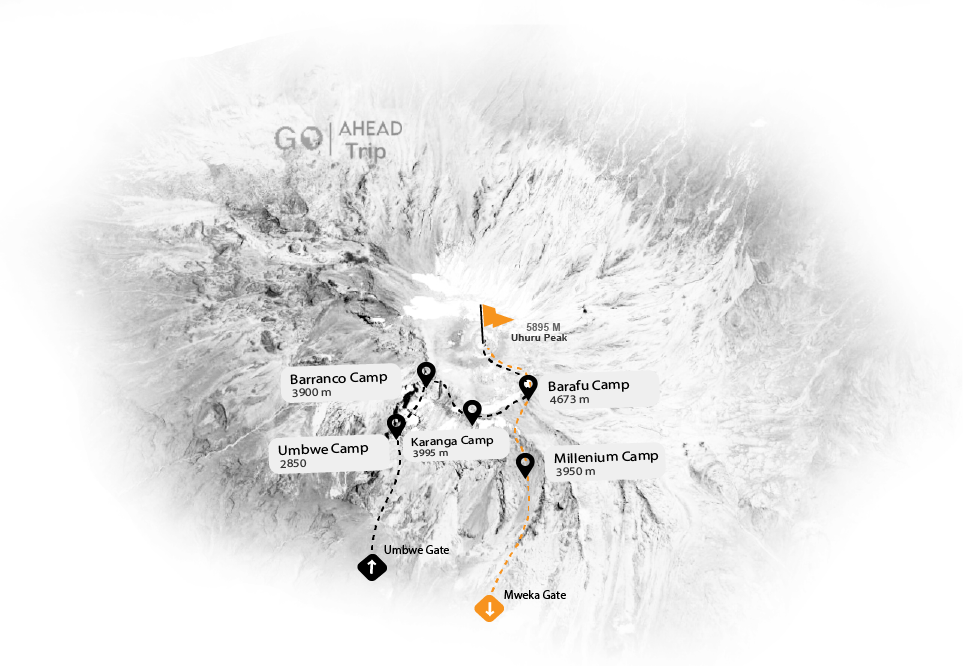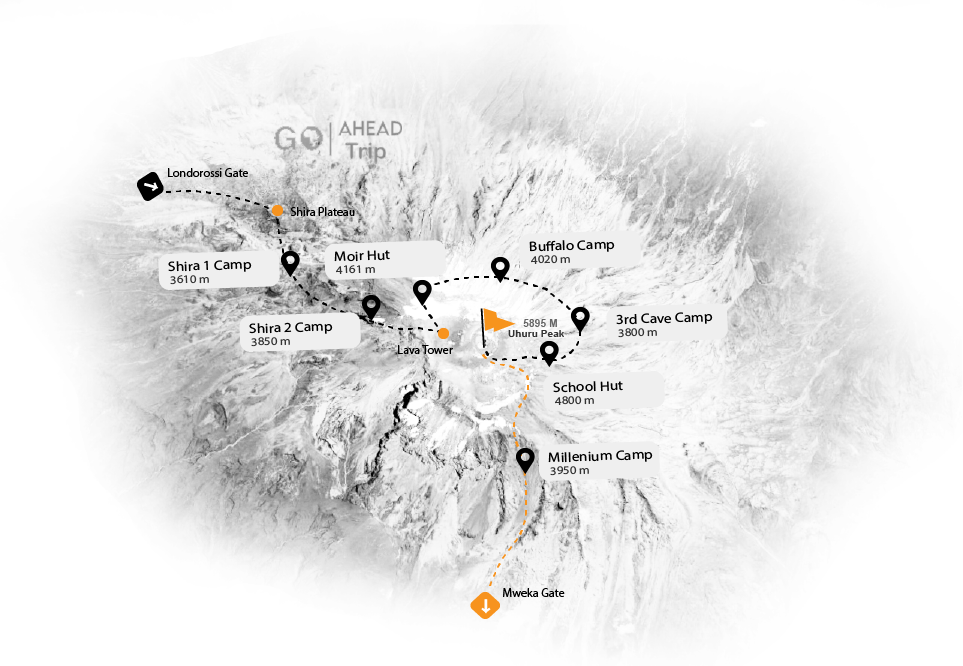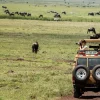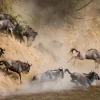Towering at 19,341 feet, Kilimanjaro is often seen as a bucket-list destination for adventurers around the globe. However, beneath its breathtaking beauty lies a formidable challenge that tests the mettle of even the most seasoned climbers. Conquering Kilimanjaro isn’t just about reaching the summit; it’s about navigating unpredictable weather, battling altitude sickness, and mastering the arduous trek through diverse terrains. As hikers embark on their journey to Africa’s rooftop, they quickly discover that the allure of Kilimanjaro is matched only by its daunting trials. Are you ready to uncover just how demanding this iconic climb can truly be? As we delve deeper into the intricacies of climbing Kilimanjaro, you may find yourself questioning whether this epic adventure is as conquerable as it seems. Prepare for a journey that challenges not just your physical limits, but also your spirit and determination. Let’s explore what it takes to reach the top of Kilimanjaro.
The allure of climbing Kilimanjaro
Climbing Kilimanjaro is more than just a physical endeavor; it is a journey that captivates the imagination of adventurers from all corners of the globe. The majestic peak, rising high above the African plains, beckons with its snow-capped summit and promises of unparalleled views. This allure is not merely about standing on the highest point in Africa but also about the personal triumph and sense of accomplishment that comes with such a feat. The mountain’s iconic status as one of the Seven Summits adds to its appeal, marking it as a must-do for serious mountaineers and casual hikers alike.
For many, Kilimanjaro represents a unique blend of accessibility and challenge. Unlike other high-altitude peaks, it does not require technical climbing skills, making it approachable for those with determination and reasonable fitness levels. This accessibility, however, should not be mistaken for ease. The mountain’s diverse ecosystems, ranging from tropical rainforests at its base to arctic conditions at its summit, present a variety of challenges that require careful preparation and respect for the environment.
The cultural and historical significance of Kilimanjaro also adds a layer of depth to the climb. The mountain holds a special place in the hearts of the local Chagga people and is steeped in legends and lore. Climbing Kilimanjaro is not just a physical journey but also an opportunity to connect with the rich cultural tapestry of Tanzania. This combination of natural beauty, physical challenge, and cultural significance makes Kilimanjaro a truly alluring destination for adventurers worldwide.

Understanding the different routes to the summit
There are several routes to the summit of Kilimanjaro, each with its unique characteristics and challenges. The most popular route, the Marangu Route, is often referred to as the “Coca-Cola Route” due to its relative ease and the availability of hut accommodations along the way. Despite its popularity, it is not necessarily the best choice for everyone, as its rapid ascent can increase the risk of altitude sickness.
The Machame Route, also known as the “Whiskey Route,” is favored by those seeking a more scenic and challenging climb. This route offers stunning views of the mountain and its surrounding landscapes, but it also requires a higher level of fitness and determination. The Machame Route is longer and involves more steep ascents and descents, which can be taxing on the body but also provide better acclimatization opportunities.
For those seeking a less crowded experience, the Lemosho and Rongai Routes are excellent alternatives. The Lemosho Route approaches the mountain from the west and offers a more gradual ascent, increasing the chances of successful acclimatization. The Rongai Route, on the other hand, starts from the north and is the only route that approaches Kilimanjaro from this direction. It is known for its remote and less-traveled path, providing a sense of solitude and wilderness. Each route has its pros and cons, and choosing the right one depends on individual preferences, fitness levels, and experience.
Physical and mental challenges of the climb
Climbing Kilimanjaro is not just a test of physical endurance but also a significant mental challenge. The physical demands of the climb are evident in the long hours of trekking each day, often in harsh and unpredictable weather conditions. The diverse terrains, ranging from muddy rainforests to rocky alpine deserts, require different skills and strengths. Hikers must be prepared for steep ascents, loose scree, and icy paths as they make their way to the summit.
The mental aspect of the climb is equally demanding. The monotony of putting one foot in front of the other for hours on end can be mentally exhausting. The high altitude can also take a toll on mental clarity and mood, making it difficult to stay motivated. It’s not uncommon for climbers to experience moments of doubt and frustration, especially during the final push to the summit. Maintaining a positive mindset and staying focused on the goal are crucial for overcoming these mental hurdles.
Preparation is key to managing both the physical and mental challenges of the climb. Building physical fitness through regular exercise and endurance training is essential. Equally important is mental preparation, which can be achieved through visualization techniques, setting realistic goals, and developing coping strategies for dealing with stress and discomfort. Understanding the challenges ahead and being mentally prepared for them can make a significant difference in the overall experience of climbing Kilimanjaro.
Altitude sickness: What you need to know
Altitude sickness, or acute mountain sickness (AMS), is one of the most significant challenges climbers face on Kilimanjaro. It occurs when the body fails to acclimatize to the reduced oxygen levels at high altitudes, leading to symptoms such as headaches, nausea, dizziness, and fatigue. In severe cases, it can escalate to life-threatening conditions like high-altitude cerebral edema (HACE) or high-altitude pulmonary edema (HAPE). Understanding and recognizing the signs of altitude sickness is crucial for a safe and successful climb.
The best way to prevent altitude sickness is through gradual acclimatization. This means allowing the body time to adjust to the decreasing oxygen levels by ascending slowly and taking rest days when necessary. Most recommended routes on Kilimanjaro include “climb high, sleep low” strategies, where climbers ascend to higher altitudes during the day and descend to lower altitudes for sleep. This approach helps the body adapt more effectively to the changing conditions.
Hydration and nutrition also play critical roles in preventing altitude sickness. Drinking plenty of water helps maintain proper blood oxygen levels, while a balanced diet ensures the body has the necessary energy to cope with the physical demands of the climb. Climbers should avoid alcohol and caffeine, as these can exacerbate dehydration. Additionally, some climbers choose to use medications like acetazolamide (Diamox) to help with acclimatization, but this should be done under the guidance of a medical professional.
Essential gear and preparation for the hike
Proper gear and preparation are essential for a successful climb up Kilimanjaro. The mountain’s diverse climates mean that climbers need to be prepared for a wide range of weather conditions, from hot and humid at the base to freezing temperatures at the summit. Layering is key, allowing climbers to adjust their clothing to stay comfortable throughout the ascent. A good base layer for moisture-wicking, an insulating layer for warmth, and a waterproof outer layer for protection against wind and rain are all necessary.
Footwear is another critical component of the gear list. A sturdy pair of hiking boots with good ankle support and a solid grip is essential for navigating the varied terrains. Breaking in the boots before the climb is crucial to avoid blisters and discomfort. Additionally, gaiters can help keep dirt and debris out of the boots, and a good pair of hiking socks can provide extra cushioning and support.
Other essential items include a quality backpack, a sleeping bag rated for cold temperatures, and trekking poles for stability. Hydration systems, such as water bladders or bottles, are necessary to ensure adequate water intake. Sunscreen, sunglasses, and a hat are important for protection against the intense sun at higher altitudes. Finally, a first aid kit, personal medications, and a headlamp for nighttime use are all critical for safety and comfort during the climb.
The role of guides and porters in your journey
Guides and porters play an indispensable role in the journey up Kilimanjaro. Their expertise, support, and local knowledge significantly enhance the chances of a successful summit. Guides are responsible for leading the group, setting the pace, and ensuring the safety of all climbers. They are trained to recognize the symptoms of altitude sickness and can make critical decisions about whether to continue or descend based on the health and well-being of the climbers.
Porters, on the other hand, carry the bulk of the gear and supplies, allowing climbers to focus on the trek itself. They transport tents, cooking equipment, food, and personal items, significantly lightening the load for the climbers. This support is crucial, as carrying heavy loads at high altitudes can be extremely taxing and increase the risk of fatigue and injury. Porters also help set up camp and prepare meals, ensuring that climbers have the necessary sustenance and rest.
The relationship between climbers and their guides and porters is one of mutual respect and camaraderie. Tipping is an important aspect of this relationship, as it is a significant source of income for the guides and porters. Showing appreciation for their hard work and dedication through fair compensation is an essential part of the climbing experience. The expertise, support, and encouragement provided by guides and porters are invaluable, making them integral to the success and enjoyment of the Kilimanjaro adventure.
Best times of the year to climb Kilimanjaro
Choosing the best time to climb Kilimanjaro is crucial for maximizing the chances of a successful and enjoyable ascent. The mountain’s climate is influenced by its proximity to the equator, resulting in distinct wet and dry seasons. The most favorable times to climb are during the dry seasons, which typically occur from January to March and from June to October.
The January to March period is characterized by colder temperatures and the possibility of snow at higher altitudes. This time of year offers clear skies and fewer crowds, providing a more solitary and serene climbing experience. The June to October period, on the other hand, is the peak climbing season, with milder temperatures and more stable weather conditions. This period coincides with the summer holidays in many parts of the world, resulting in a higher number of climbers on the mountain.
While climbing during the dry seasons is generally recommended, it is also possible to climb during the shoulder seasons of April to May and November to December. These periods are characterized by intermittent rain and fewer climbers, offering a more challenging but potentially rewarding experience. Regardless of the time of year, climbers should be prepared for rapidly changing weather conditions and be flexible with their plans. Proper preparation and choosing the right time to climb are key factors in ensuring a successful summit.
Tips for a successful summit attempt
Achieving a successful summit on Kilimanjaro requires careful planning, preparation, and a positive mindset. One of the most important tips is to take the climb slowly and pace yourself. “Pole pole,” a Swahili phrase meaning “slowly, slowly,” is a mantra that guides repetition to emphasize the importance of a gradual ascent. Rushing can lead to exhaustion and increase the risk of altitude sickness. Walking at a steady, manageable pace allows the body to acclimatize more effectively and conserves energy for the challenging summit push.
Staying hydrated and well-nourished is crucial for maintaining energy levels and overall health during the climb. Drinking plenty of water helps combat the effects of high altitude, while a balanced diet provides the necessary fuel for the physical demands of the trek. Snacks such as nuts, dried fruit, and energy bars can provide quick boosts of energy during the long days of hiking.
Mental preparation is equally important. Visualizing the climb and setting realistic goals can help maintain motivation and focus. It’s also important to be mentally flexible and prepared for setbacks. Weather conditions, physical ailments, or other unforeseen challenges may require adjustments to the plan. Having a positive attitude and being adaptable can make a significant difference in the overall experience and increase the likelihood of a successful summit.
Is the challenge worth it?
Climbing Kilimanjaro is undoubtedly a formidable challenge, one that tests physical endurance, mental resilience, and adaptability. The journey to the summit is fraught with obstacles, from the grueling trek through diverse terrains to the ever-present threat of altitude sickness. However, the rewards of conquering Kilimanjaro far outweigh the difficulties. The sense of achievement, the breathtaking views, and the personal growth that comes from pushing beyond one’s limits make the climb a truly transformative experience.
For many climbers, reaching the summit of Kilimanjaro is a life-changing event. The mountain’s allure lies not only in its physical prominence but also in the profound sense of accomplishment it offers. Standing atop Africa’s highest peak, with the world spread out below, is a moment of unparalleled triumph and joy. The journey teaches valuable lessons about perseverance, determination, and the power of the human spirit.
In the end, the challenge of climbing Kilimanjaro is indeed worth it. The mountain calls to those with a spirit of adventure and a desire to test their limits. It offers an opportunity to connect with nature, experience different cultures, and achieve something truly remarkable. For those willing to undertake the journey, Kilimanjaro promises an unforgettable adventure and a lasting sense of fulfillment.
